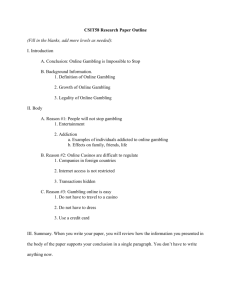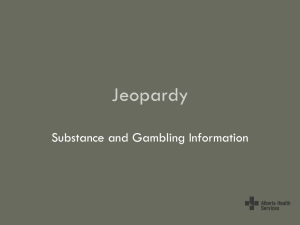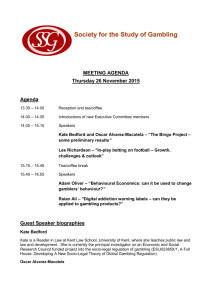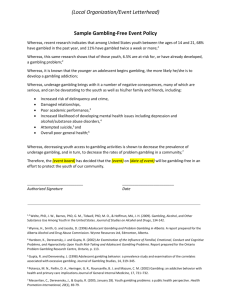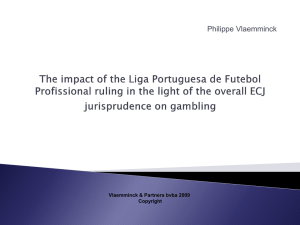Presentation: The adolescent brain
advertisement
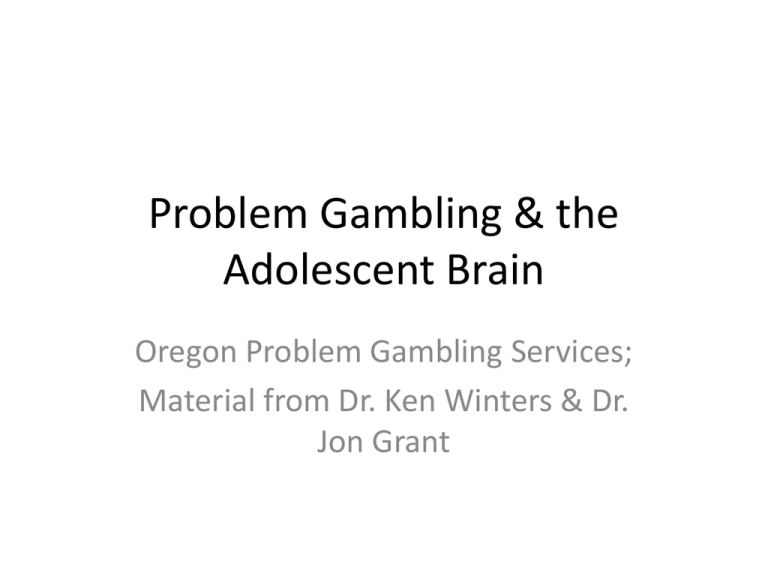
Problem Gambling & the Adolescent Brain Oregon Problem Gambling Services; Material from Dr. Ken Winters & Dr. Jon Grant Adolescence is a period of profound brain maturation. We thought brain development was complete by adolescence We now know… maturation is not complete until about age 24!!! An Immature Brain = Less Brakes on the “Go” System Construction Ahead • Growth of the brain’s nerve cells (neurons) occurs through late childhood • 1,000,000,000,000,000 possible connections. • Around 11 – GIRLS; 12½ - BOYS: • Some of these connections are pruned off and remaining ones are strengthened. Construction Ahead • When the pruning is complete, the brain is faster and more efficient. • But… during the pruning process, the brain is not functioning at full capacity Neurological maturation starts at the back of the brain, and moves to the front Amygdal a Judgme nt Emotion Motivati on Prefrontal Cortex Nucleus Accumben s Physical coordinati on Cerebellu m Notice: Judgment is last to develop! Judgment Gets Better with Age • By age 18, the adolescent’s judgement for structured challenges is roughly equal to that of adults. • But judgement that involves resisting impulses or delaying gratification is still under construction during late adolescence and early adulthood. The dopamine system is more robust during adolescence than in adulthood • novel stimuli trigger firing of dopamine; the experience is rewarded by a dopamine burst • Compared to adults, the robust dopamine system of adolescence will contribute to a more heightened reward experience in the face of novel stimuli Implications of “Arrested Development” for Adolescent Behavior We can infer...…. • Preference for physical activity • Preference for high excitement and low effort activities • Preference for novelty • Poor planning and judgment • Minimal consideration of negative consequences • More risky, impulsive behaviors • Some evidence that being in a group accentuates risk taking 1. Background 3. Neurodevelopment and gambling • youth in general • ADHD youth 2. Neurodevelopment Does normal brain development contribute to adolescent susceptibility to gambling? INDIRECT SUPPORT: 1. > risk taking (particularly in groups) (gambling?) 2. > propensity toward low effort - high excitement activities (gambling?) 3. < capacity for good judgment & weighing consequences (gambling?) 4. > sensitivity to novel stimuli (gambling?)
